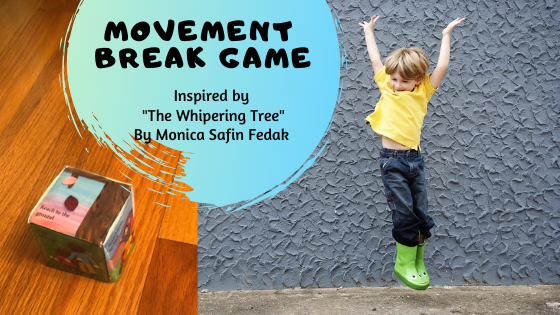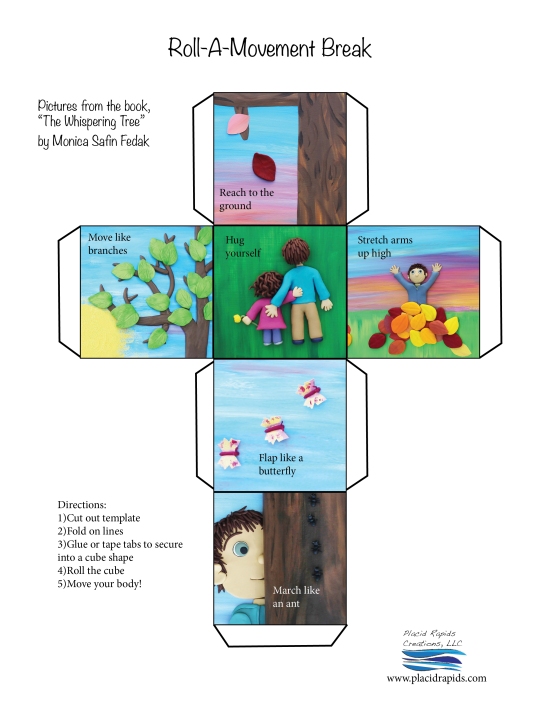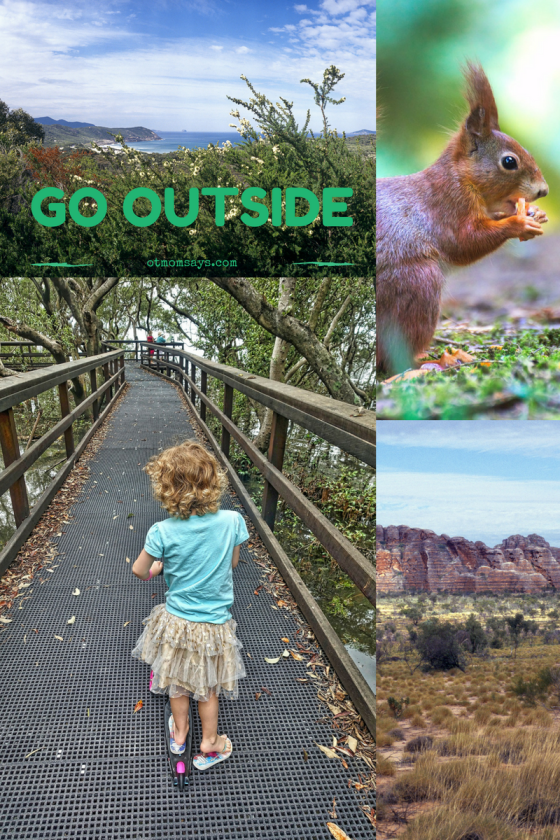It hadn’t even been a terrible day, but I felt like I was about to burst. After close to two hours of what seemed like non-stop crying and whining, my head hurt and I had had enough. My husband had just returned home work and I sent the kids to their play room with him so I could cool down. He raised his eyebrows and looked at me.
Then Dr. Dad said, “Take a deep breath, calm down, there’s no reason to be so frustrated.”
OT Mom replied, “I know, but I’m stressed out and I need a minute.”

Whether you are a parent, a student, someone with a full time job, or something else entirely, I am guessing you have had one of those moments before. Feelings of stress, anxiety, depression, and even anger are something we all experience at some point in life. Unfortunately for some, those feelings surface more intensity or more frequently.
According to the National Institute of Mental Health, in 2015 it was estimated that 43.4 million American Adults (17.9% of the U.S. adult U.S. population) were living with a mental illness at some point during that year. That’s nearly 1 in 5. Moreover, these numbers do not take in account substance use disorders (such as drug or alcohol addition).
If you think you’re mental health is in a bad place, it’s important to seek proper medical treatment from a trained professional. Furthermore, if you have concerns about the mental health of a loved one, it should be taken seriously, as the statistics show how prevalent these conditions are. Early identification and treatment are important to ensuring optimal mental health outcomes.

Even for people without a diagnosed mental health disorder, life can be seem overwhelming, stressful, and exhausting at times.
“It’s natural to have ups and downs. its not natural if your persistently down for more than 6 months,” -Kalub Fedak, M.D.
For a lot of us, keeping our mental health in balance on a day to day basis is a work in progress. So after a little reading, a little thinking, and a few long conversations with Dr. Dad and some stressed out friends, I’ve compiled some strategies for a potentially happier today.
Get Moving
In addition to all the physical health benefits of exercise, “the overwhelming evidence present in the literature today suggests that exercise ensures successful brain functioning” (Deslandes, Morae, Ferreira et al., 2009). Physical exercise releases several neurotransmitters, including serotonin and dopamine.4 Serotonin impacts alertness, plays a role in pain control, and low levels of serotonin are linked to depression and even suicidal behavior.5 Many of us have also heard of the “runner’s high” that from increased endorphins which are released during high intensity exercise.
“The mind affects the body and the body affects the mind” -Kalub Fedak, M.D.
In addition to the neurologic changes that comes with exercise, physical changes that result (such as increased strength, endurance, and overall better health) can result in changes in self-esteem and impact overall wellness.
Get Outside
Being in natural environments may help with coping, recovering from stress and promoting recovery from mental fatigue. Simply observing nature has been identified to correlate with positive impacts on concentration and productivity.6 Wherever you live, try to make time to get outdoors. You can visit a park or a nature preserve, take a scenic route to or from work, or even start your own garden.
Better Yet, Get Moving Outside
There is evidence to suggest that positive changes in both mood and self-esteem can occur after just 5 minutes of green exercise. Who doesn’t have 5 minutes? The study also found that the biggest changes in mood were following either light or vigorous exercise, but improvements were identified for all intensities of green exercise2. I think this is pretty exciting, since we all have different physical capabilities, and this suggests that even an easy stroll at lunch time can make your day a bit brighter.

Drop the Guilt, Just Say “No.”
It’s important to have a balance in your life and sometimes that means limiting your obligations. Sometimes saying “no” to requests is just fine, and feelings of guilt shouldn’t be attached to it. There are always going to be fundraisers, parties, events, extra work, invitations to do more. For a lot of us, it’s hard to say, “no,” even when it’s taxing us to take on more. It’s ok to decline these obligations, especially if it’s going to increase your feelings of stress. Balance is essential for a happy life, so don’t feel guilty if sometimes the answer is “no.”
Ask for Help
This can be hard for many people, and I’ve struggled with it myself. Sometimes I want to be the super mom. I want to be the mom that doesn’t just do it all, but does it with a smile on my face and all on my own. This is just not realistic. It’s important to not be afraid to use the support people we have in our lives. Sometime just having someone to talk to when you’re feeling down helps. Or if you have too much going on, you can ask for something specific. If your struggling to find someone in your life to talk to, perhaps trying a support group could help.

Reshape Your Thinking
There’s a reason cognitive behavioral therapy (CBT) is well-known. It works. In a study that looked at multiple stress interventions for the workplace, cognitive behavioral interventions were found to have the largest impact on stress reduction7. If you think negative or irrational thoughts are causing a disruption in your daily life, seek the help of a licensed health professional for individualized treatment.
I will leave the specifics of CBT to the experts and just share some ideas that could improve the optimism in your thinking.
- Try not to dwell on the negatives. Many of us are familiar with the scenario of replaying an event that happened where we wished we would have said something differently than we did. Next time you’re worrying about something in the past, focus on the something good you did that day. It’s ok to acknowledge the feelings of regret, but try not to dwell on them. Today is a new day.
- Don’t focus on all or nothing. There are shades of gray in most aspects of life, so striving for perfection could set you up for disaster. It’s great to set goals to work towards, but even if the end result doesn’t come out how you had hoped, it doesn’t necessarily mean you have failed. Partially met goals counts too.
- Turn off the negative waterfall. A lot of times when we are in a bad mood, all the negatives seem to get bolder, louder, and splashing down on us like a waterfall. Take a minute and focus on something good. A lot of times we blow bad things out of proportion when we are in a bad mood.
- Acknowledge what you are thinking and know that it’s not a permanent state. It’s ok to be sad, mad, or anxious at times. Sometimes these feelings are good motivators for us. What matters is what you do in response to those feelings.
Have a Moment of Mindfulness
“Mindfulness is the practice of being happy in the present moment. Mindfulness means being aware of what’s going on in an accepting way, opening ourselves to our experience.” -Thomas Bien, Ph.D. from The Buddha’s Way of Happiness (p. 31)
I’m rather new to the practice of mindfulness, but I’ve found it personally helpful on a daily basis. We live in an extremely fast-paced world and sometimes we forget to stop and really experience the moment we are living. Taking a moment to be mindfulness can be liberating, as it can help you become more aware of your feelings, sensations, and the world around you.
“When we practice living mindfully and happily, we don’t create an inner war.”
-Thomas Bien, Ph.D. from The Buddha’s Way of Happiness (p. 91)
I’ve actually started using a bit of mindfulness with my three-year-old when he is mid-tantrum. I will usually give him a hug and ask him if he can feel my arms hugging him, if he can feel his heart beating, and if he can feel the air going into him as he breaths. Whether it’s the act of being mindful or the fact that being mindful of himself distracts him from his whatever the moment’s tantrum was about, it seems to help. A lot.

Engage in a hobby
Leisure pursuits are correlated with both psychosocial and physical benefits and are important to maintaining a happy and balanced life. Whether you have a current leisure activity or want to start a new one, there’s evidence that engaging in nonobligatory, enjoyable activities may lead to an increased sense of self worth, increased coping skills, and a release of feelings of hostility and aggression8. Even if time is limited, a little bit of leisure is important.
Smile and Laugh
There’s science behind the our laughter. When we laugh, our hormones related to both stress and “feeling good” are altered. Laughter leads to a decrease in those stress hormones and an increase in endorphins that make us feel happy8
. What makes you laugh? Maybe try looking at a picture you think is hilarious. Watch a funny movie. Talk to your favorite funny family member or friend. I know I always feel better when I talk with my Dad (who has a whacky sense of humor). Whatever gets you smiling and laughing, go for it. I bet you will feel at least a little relieved.

Use your Senses to Relax
Sensory strategies can do wonders for effecting mood. You probably already know what types of things calm and relax you and what irritates or stresses you out. Try turning down the lights, turning on enjoyable music and lighting a pleasant smelling candle to relax. Deep pressure input and warm tactile sensations (like a warm bath) are calming, as is slow, linear movement like rocking. Try keeping a list of what helps your to relieve your stress in your environment to so can utilize those things or change your environment as needed.
Write It All Down
I used to work at a school for kids with severe and challenging behaviors where both students and staff wore a “safety plan” everyday. The safety plans consisted of a list of personalized coping strategies that could be used as needed. When we are angry, stressed, anxious or otherwise upset, we often have trouble accessing our coping strategies because our emotions are interfering. While you might not want to wear a badge on your chest with what works best for you, I encourage you to take note of what does seem to work best for your personal situation and coping style. I actually have a few things noted on a list in my phone (because who doesn’t keep their phone nearby most of the time in this day and age).
Talk to Your Doctor
If you are finding yourself unhappy more than not, it’s probably time to talk to your doctor. There is no shame in bringing up personal mental health concerns to a professional. Mental health is just as important as physical health, and mental illness has real, neurological implications. “Chronic depression alters neural synapses, as does uncontrolled pain,” Kalub Fedak, M.D. explains. It can hurt just as much to have a mental health condition as a physical health condition. Let’s all get past the stigma and take care of ourselves and each other.
If you feel like hurting yourself or someone else, seek assistance immediately. Call 911, contact your nearest emergency services, or call the National Suicide Prevention Lifeline at 1-800-273-8255.
*Disclaimer: The information presented in the blog is intended for information purposes only. Please consult your physician with any medical concerns and/or for medical advice. The information presented is not intended to be used in place of individualized therapy services, please contact your health care team for skilled therapy if you think it is necessary. Please supervise your children (or friends, spouses, etc) if you decide to try any of the activities or ideas presented as the author or this blog does not claim liability for possible injury or negative consequences related to the activities and ideas presented here.
References:
1. Any Mental Illness (AMI) Among US Adults, (n.d.) Retrieved April 9, 2017, from https://www.nimh.nih.gov/health/statistics/prevalence/any-mental-illness-ami-among-us-adults.shtml
2. Barton, J., & Pretty, J. (2010). What is the best dose of nature and green exercise for improving mental health? A multi-study analysis. Environmental Science & Technology, 44(10), 3947-3955. doi:http://dx.doi.org/10.1021/es903183r
3. Bien, Thomas (2010) The Buddha’s Way of Happiness. New Harbinger Publications, Inc, Oakland, CA
4. Deslandes, A., Moraes, H., Ferreira, C., Veiga, H., Silveira, H., Mouta, R., . . . Laks, J. (2009). Exercise and mental health: Many reasons to move. Neuropsychobiology, 59(4), 191-198. doi:http://dx.doi.org/10.1159/000223730
5. Lundy-Ekman, L. (2007). Neuroscience: Fundamentals for Rehabilitation (3rd). Saunders Elsevier, St. Louis, Missouri
6. Maller, C., Townsend, M., Pryor, A., Brown, P., & Leger, L. S. (2006). Healthy nature healthy people: ‘contact with nature’ as an upstream health promotion intervention for populations. Health Promotion International, 21(1), 45-54. Retrieved from https://search.proquest.com/docview/200046096?accountid=143111
7. Richardson, K. M., & Rothstein, H. R. (2008). Effects of occupational stress management intervention programs: A meta-analysis. Journal of Occupational Health Psychology, 13(1), 69-93. doi:http://dx.doi.org/10.1037/1076-8998.13.1.69
8. Southam, Marti (2006). Leisure Occupations. In McHugh Pendleton, H. & Schultz-Krohn, W. (Eds). Pedretti’s Occupational Therapy: Practice Skills for Physical Dysfunction (6th) (pp. 337-339). Mosby Elsevier, St. Louis, Missouri















